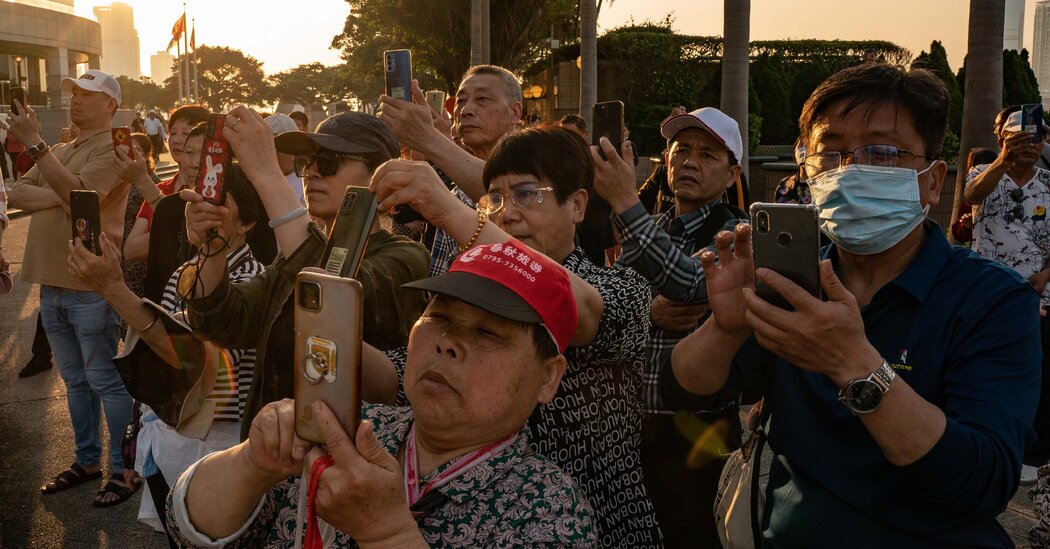One by one the tour buses descended on the blue collar neighborhood in Hong Kong known as To Kwa Wan — literally translated as Potato Bay — unloading throngs of travelers from mainland China outside large restaurants where a quick lunch awaited them inside.
Outfitted in white, red and orange ball caps to denote which tour they belonged to, the visitors crowded the sidewalks, smoked cigarettes under a “No Smoking” sign and bumped into the glass storefront of a real estate office where Nicky Lam, a property agent, was rolling her eyes.
“They’re very loud,” Ms. Lam said, complaining that some of the tourists used her office bathroom and water cooler without asking.
“One tourist came in and asked for restaurant recommendations,” she added. “I stared at him and said, ‘This is a real estate office.’”
The return of budget mainland tour groups in recent months for the first time since China’s borders were closed by the pandemic in early 2020 has revived old tensions in a city transformed by Beijing’s political crackdown.
Before the pandemic, an influx of mainlanders and their wealth into Hong Kong sent prices and rents soaring, fueling frustrations among the city’s residents that sometimes spilled over into outright bigotry. In the nearly three years since Beijing imposed a sweeping national security law over Hong Kong to assert its political dominance, criticism of the mainland has often been muted.
Now, the public response to the budget tourists — arriving on packages that cost as little as $175 for a two-day visit — has been less than welcoming, and at times, downright rude.
Local residents also say the tourists — who tend to travel in groups of two dozen or more — are too noisy, are snarling traffic and are blighting public spaces by squatting and dining on boxed lunches outdoors. One group offended local sensibilities by slurping cup noodles outside a public toilet in Repulse Bay, a beach redoubt of multimillion-dollar homes.
Even some members of Hong Kong’s legislature, which is fully stacked with pro-Beijing lawmakers, have lost patience.
“Can we have some good quality tour groups?” Kitson Yang asked his colleagues during a recent legislative session while holding up printed pictures of the tourists deluging parts of the city.
Before the pandemic, mainland visitors powered Hong Kong tourism, comprising nearly 80 percent of all arrivals in 2018. After the city imposed some of the strictest pandemic measures in the…
Click Here to Read the Full Original Article at NYT > Travel…
